|
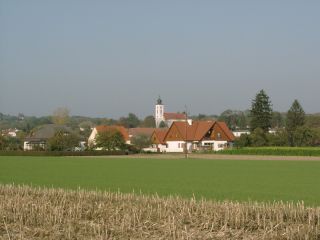 As the agricultural hub of the West Hungarian lowlands Heiligenkreuz in the
Lafnitz Valley has a long history to look back on. The town was not far from the
so-called “Bernsteinstraße”, which was already an important point of
North-South connection during Roman times and led from the Baltic to the
Adriatic Sea. The settlement, which lay on Römerstraße, was mentioned as early
as 1157. The first documented mention of the settlement, referred to then as “Keresthur”
(Kreuzherr), appears in 1428 in King Sigismund’s letter of bestowal. In the
letter, Heiligenkreuz, in relations to the customs office, is portrayed as an
important, ancient locality.
As the agricultural hub of the West Hungarian lowlands Heiligenkreuz in the
Lafnitz Valley has a long history to look back on. The town was not far from the
so-called “Bernsteinstraße”, which was already an important point of
North-South connection during Roman times and led from the Baltic to the
Adriatic Sea. The settlement, which lay on Römerstraße, was mentioned as early
as 1157. The first documented mention of the settlement, referred to then as “Keresthur”
(Kreuzherr), appears in 1428 in King Sigismund’s letter of bestowal. In the
letter, Heiligenkreuz, in relations to the customs office, is portrayed as an
important, ancient locality.
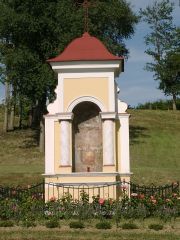 According to folklore, hundreds of years ago Bavarians and Swabians came to the
area, which was predominantly covered with thick forests. The settlers are
rumored to have placed a cross made of oak on the site where the church now
stands. The community’s name “Keresztur” (Lord Cross) is said to come from
this cross. In 1782 the name of the town was changed to Rabakeresztur and
finally Heiligenkreuz. In the year 1921 the designation “in Lafnitz Valley”
was added.
According to folklore, hundreds of years ago Bavarians and Swabians came to the
area, which was predominantly covered with thick forests. The settlers are
rumored to have placed a cross made of oak on the site where the church now
stands. The community’s name “Keresztur” (Lord Cross) is said to come from
this cross. In 1782 the name of the town was changed to Rabakeresztur and
finally Heiligenkreuz. In the year 1921 the designation “in Lafnitz Valley”
was added.
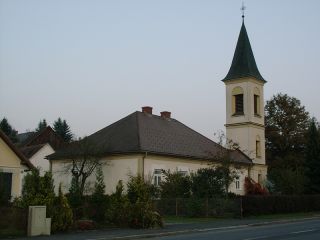 On the outskirts of St. Gotthard, the post office in Heiligenkreuz was very
important for the region. The post office was built as early as the middle of
the 18th century, and is thus the oldest post office in South Burgenland.
On the outskirts of St. Gotthard, the post office in Heiligenkreuz was very
important for the region. The post office was built as early as the middle of
the 18th century, and is thus the oldest post office in South Burgenland.
Even early on Heiligenkreuz was not spared from blows of fate. In 1824 and 1917
large fires raged and destroyed large parts of the community. 400 years earlier
the plague raged, claiming many inhabitants’ lives (an old legend tells of the
affliction).
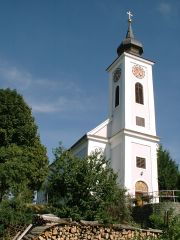 After the end of the first World War almost the entire population supported an
annexation of German-speaking West Hungary to Austria. One of the most avid
supporters of this idea was the Mill owner Karl Wollinger from Heiligenkreuz. He
travelled throughout the Lafnitz Valley and won support of the inhabitants for
the annexation. On August 29, 1921 Burgenland was supposed to be handed over to
Austria. The Austrian national police and customs officers marched into
Heiligenkreuz. The next night they were attacked by Hungarian guerilla fighters
and escorted to St. Gotthard. From then on the area was occupied by the guerilla
fighters for three months. The annexation ultimately took place November 28,
1921.
After the end of the first World War almost the entire population supported an
annexation of German-speaking West Hungary to Austria. One of the most avid
supporters of this idea was the Mill owner Karl Wollinger from Heiligenkreuz. He
travelled throughout the Lafnitz Valley and won support of the inhabitants for
the annexation. On August 29, 1921 Burgenland was supposed to be handed over to
Austria. The Austrian national police and customs officers marched into
Heiligenkreuz. The next night they were attacked by Hungarian guerilla fighters
and escorted to St. Gotthard. From then on the area was occupied by the guerilla
fighters for three months. The annexation ultimately took place November 28,
1921.
Destruction of Heiligenkreuz in WWII
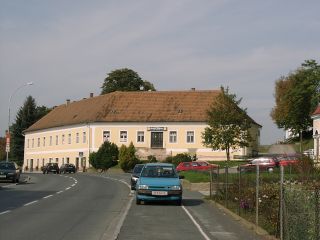 Especially severe destruction was brought on by WWII. At the end of March 1945
Russian troops stood at the town’s door. Ownership of the village changed six
times during the combat operations. The battle lasted 10 days. 75% of the town
was destroyed, making it the most severely devastated in Burgenland. After the
war ended, the afflicted population began right away on the reconstruction of
the community, and soon the worst damage was repaired. In 1969 the last damaged
house in Heiligenkreuz was repaired. In its place the new administrative
building with a kindergarden was built.
Especially severe destruction was brought on by WWII. At the end of March 1945
Russian troops stood at the town’s door. Ownership of the village changed six
times during the combat operations. The battle lasted 10 days. 75% of the town
was destroyed, making it the most severely devastated in Burgenland. After the
war ended, the afflicted population began right away on the reconstruction of
the community, and soon the worst damage was repaired. In 1969 the last damaged
house in Heiligenkreuz was repaired. In its place the new administrative
building with a kindergarden was built.
In the name of community centralization in Burgenland in January 1971 Poppendorf
and Heiligenkreuz were united with the Heiligenkreuz community. Owing to a
decree from the Burgenland federal state government, in 1971 the community was
conferred the right to refer to itself as a “Market Town”.
Since then Heiligenkreuz has been an
important “Gateway to the East” in Europe.
Population development 1869-2010
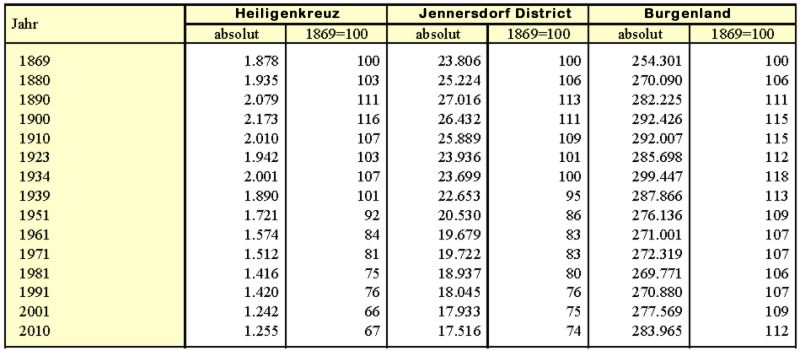
|